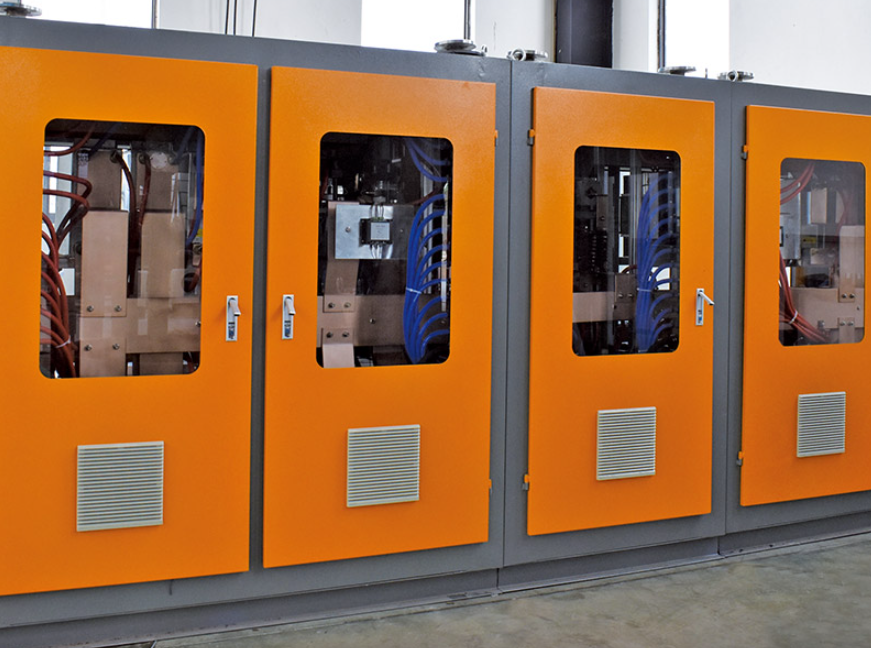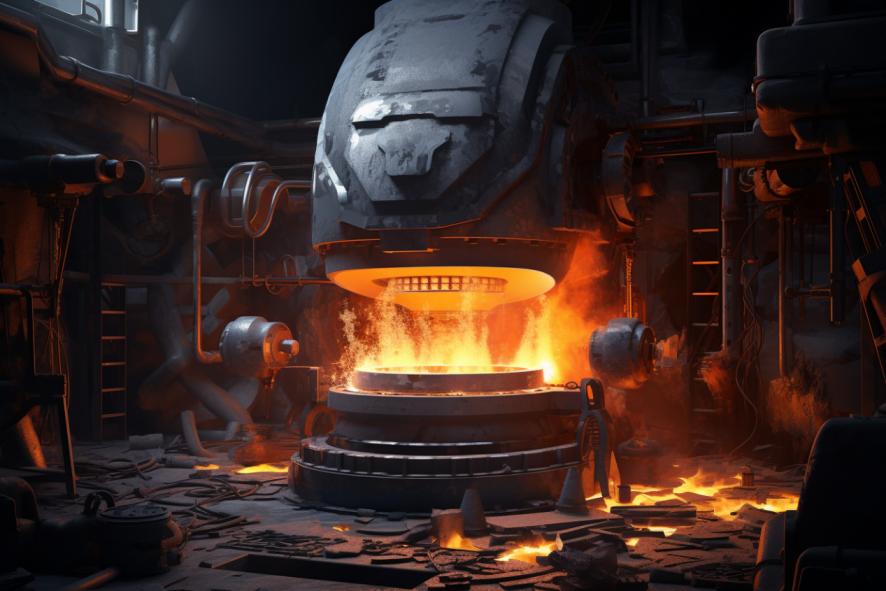Powering Productivity: Induction Iron Melting Furnace in Operations
The iron melting industry continues to evolve with advancements in induction furnace technology, driven by efficiency, sustainability, and market demand. Manufacturers like Taizhou Hongkang Electric Co., Ltd. play a pivotal role in shaping the future of iron melting through innovative solutions and a commitment to excellence. With continued focus on technological innovation, integration, and sustainability, the future of induction furnace technologies looks promising for the iron melting industry.
Introduction to Iron Melting Induction Furnaces
1.1 Overview of Induction Furnaces
Induction furnaces have revolutionized the iron melting industry with their efficiency and effectiveness. Unlike traditional methods like cupolas or electric arc furnaces, induction furnaces utilize electromagnetic induction to heat and melt metal. These furnaces have become indispensable in various sectors due to their ability to deliver precise control over the melting process.
1.2 Advantages Over Traditional Melting Methods
The induction furnace offers several advantages over traditional melting methods. One significant advantage is its ability to melt metals quickly and efficiently, resulting in higher productivity. Additionally, induction furnaces produce minimal emissions and waste, making them more environmentally friendly. They also provide better control over temperature and alloy composition, leading to higher-quality melts.
1.3 Basic Principles of Operation
At the heart of an induction furnace lies the principle of electromagnetic induction. When alternating current passes through a coil, it generates a rapidly alternating magnetic field. When a conductive material, such as iron, is placed within this field, eddy currents are induced within the material. These currents generate heat due to resistance, causing the material to melt.
1.4 Applications in Iron Melting Industries
Induction furnaces find widespread applications in various iron-melting industries, including foundries, steel manufacturing, and metal recycling plants. They are particularly well-suited for melting iron and steel scrap, as well as for producing specialty alloys with precise compositions. Their versatility and efficiency make them indispensable in modern metalworking processes.
Components and Working Mechanism
2.1 Detailed Breakdown of the Components
An induction furnace comprises several key components, including the crucible, coils, power supply, and cooling system. The crucible, typically made of refractory material, holds the metal charge during melting. Surrounding the crucible are copper coils through which alternating current flows, generating the magnetic field necessary for induction heating.
2.2 How Electromagnetic Induction Works
Electromagnetic induction is the process by which a changing magnetic field induces an electric current in a conductor. In an induction furnace, the alternating current passing through the coils generates a rapidly changing magnetic field, which, in turn, induces eddy currents in the conductive material placed within the field. These eddy currents produce heat, causing the material to melt.
2.3 Crucibles, Coils, Power Supplies, and Cooling Systems
The crucible acts as a container for the molten metal and must withstand high temperatures without melting or deforming. Copper coils are carefully designed to ensure efficient energy transfer and uniform heating of the metal charge. The power supply provides the alternating current necessary for induction heating, while the cooling system prevents overheating of the furnace components.
2.4 Safety Measures and Maintenance Tips
Proper safety measures are essential when operating an induction furnace to prevent accidents and ensure worker well-being. Regular maintenance, including inspections of crucibles, coils, and electrical components, is crucial for optimal furnace performance and longevity. Additionally, operators should receive thorough training on furnace operation and safety protocols.
Efficiency and Cost-Effectiveness
3.1 Energy Efficiency Compared to Other Melting Methods
Induction furnaces are renowned for their energy efficiency compared to other melting methods. Unlike traditional furnaces, which often suffer from heat losses due to radiation and convection, induction furnaces directly heat the metal through electromagnetic induction, resulting in minimal energy wastage. This efficiency translates to lower operating costs and reduced environmental impact.
3.2 Reduction of Material Waste and Emissions
Induction furnaces produce minimal emissions and waste during the melting process. Their closed-loop design prevents atmospheric contamination and reduces the need for fluxes or other additives. Additionally, their precise temperature control minimizes the formation of undesirable by-products, resulting in cleaner melts and higher-quality finished products.
3.3 Long-Term Cost Analysis
While the initial investment in an induction furnace may be higher than that of traditional furnaces, the long-term cost savings are significant. Lower energy consumption, reduced material waste, and improved productivity contribute to a favorable return on investment over the furnace’s lifespan. Many companies find that the benefits of induction furnace technology far outweigh the initial capital outlay.
3.4 Case Studies Demonstrating Savings and ROI
Numerous case studies have demonstrated the cost-effectiveness of induction furnaces in various industrial applications. For example, a foundry that switched from a cupola furnace to an induction furnace reported significant energy savings and improved melt quality. Similarly, metal recycling plants have seen substantial reductions in processing costs and environmental impact after adopting induction melting technology.
Different Types and Capacities
4.1 Various Types of Induction Furnaces for Iron Melting
Induction furnaces come in various configurations to cater to different iron melting needs. For instance, there are coreless induction furnaces that offer excellent heat distribution and are suitable for melting both ferrous and non-ferrous metals. Channel-type induction furnaces are another option, known for their high melting rates and efficient operation. Additionally, there are induction crucible furnaces, which are ideal for smaller batches and specialized alloys.
4.2 Small-Scale vs. Large-Scale Operations
Induction furnaces are versatile and can be used in both small-scale and large-scale operations. Small-scale operations may utilize induction furnaces with lower capacities, suitable for melting smaller batches of iron or for specific applications such as jewelry making or prototype casting. Conversely, large-scale operations require induction furnaces with higher capacities to handle the volume demands of industrial manufacturing processes.
4.3 Differences in Capacities and Power Requirements
The capacity of an induction furnace refers to the maximum amount of metal it can melt in a single batch. Capacities can range from a few kilograms in smaller furnaces to several tons in larger industrial units. Along with capacity, power requirements vary depending on the size and type of furnace. Larger furnaces typically require higher power inputs to achieve the necessary melting temperatures and rates.
4.4 Considerations for Selecting the Right Type for Specific Needs
When selecting an induction furnace for iron melting, several factors must be considered. These include the desired melting capacity, available power supply, required melting temperature, and the type of iron or alloy being melted. Additionally, factors such as space constraints, budget, and operational requirements play a crucial role in determining the most suitable furnace type for a specific application.
Advanced Features and Innovations
5.1 Latest Technological Advancements
Advancements in induction furnace technology continue to enhance efficiency, productivity, and safety in iron melting operations. Manufacturers like Taizhou Hongkang Electric Co., Ltd. are at the forefront of developing innovative features such as advanced control systems, improved coil designs, and enhanced refractory materials. These advancements enable greater precision and control over the melting process, resulting in higher-quality melts and reduced downtime.
5.2 Automation and Remote Monitoring Capabilities
Automation plays a significant role in modern induction furnace systems, streamlining operations and reducing manual intervention. Automated charging systems, robotic crucible handling, and computerized process control systems enable seamless operation and optimization of furnace performance. Remote monitoring capabilities allow operators to monitor furnace parameters and troubleshoot issues from anywhere, improving efficiency and minimizing downtime.
5.3 Integration with Other Processes in the Production Line
Induction furnaces can be integrated seamlessly into existing production lines, facilitating continuous manufacturing processes. Integration with automation systems, material handling equipment, and downstream processing units enables efficient material flow and product handling. This integration optimizes overall production efficiency and ensures a smooth transition from melting to casting or further processing stages.
5.4 Sustainable Practices and Eco-Friendly Innovations
In response to growing environmental concerns, induction furnace manufacturers are increasingly focusing on sustainable practices and eco-friendly innovations. Energy-efficient designs, waste heat recovery systems, and recycling initiatives help reduce energy consumption and minimize environmental impact. Additionally, the use of renewable energy sources and eco-friendly refractory materials further enhances the sustainability of induction furnace operations.
Future Trends and Market Outlook
6.1 Growth Trends in the Iron Melting Industry
The iron melting industry is experiencing steady growth driven by increasing demand for iron and steel in construction, automotive, and infrastructure sectors. Rapid industrialization in emerging economies and infrastructure development projects worldwide contribute to the expansion of the iron melting market. As a result, the demand for advanced induction furnace technologies is expected to continue rising.
6.2 Market Projections for Induction Furnace Technologies
Market projections indicate a positive outlook for induction furnace technologies, with a focus on efficiency, automation, and sustainability. The market for induction furnaces is projected to expand significantly, driven by technological advancements, stringent environmental regulations, and the need for cost-effective metal melting solutions. Manufacturers like Taizhou Hongkang Electric Co., Ltd. are poised to capitalize on this growth by offering innovative and reliable induction furnace solutions.
6.3 Emerging Innovations and Research Areas
Research and development efforts in the field of induction furnace technology are focused on addressing key challenges such as energy efficiency, material handling, and process optimization. Emerging innovations include the development of advanced refractory materials, novel coil designs, and predictive maintenance algorithms. These innovations aim to enhance furnace performance, reliability, and sustainability in line with industry demands.
6.4 Potential Challenges and Opportunities for the Future
Despite the positive outlook, the iron melting industry faces challenges such as volatile raw material prices, fluctuating energy costs, and regulatory uncertainties. However, these challenges also present opportunities for innovation and growth. By investing in research and development, embracing sustainable practices, and adapting to evolving market trends, manufacturers can overcome challenges and capitalize on emerging opportunities in the iron melting industry.
Conclusion
Induction furnaces represent a cornerstone of modern iron melting industries, offering unparalleled efficiency, precision, and cost-effectiveness. As the demand for high-quality metals continues to grow, manufacturers like Taizhou Hongkang Electric Co., Ltd. play a crucial role in supplying advanced induction furnace solutions to meet industry needs. With their innovative designs and commitment to excellence, these manufacturers drive innovation and sustainability in metal melting processes.


